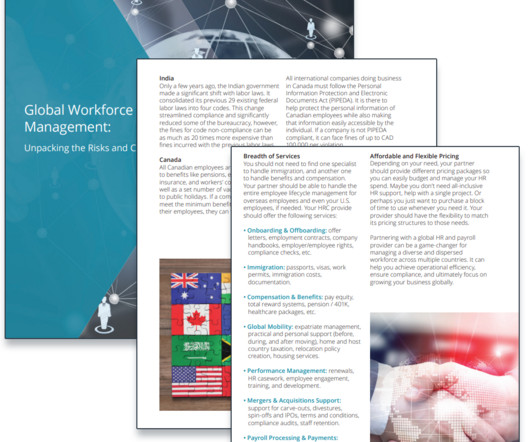Why Integrate Payroll with HR Software?
EmployeeConnect
MAY 21, 2025
As organisations grow and evolve, the divide between HR and payroll functions becomes increasingly counterproductive. Traditionally viewed as separate systems, HR and payroll actually share a wealth of overlapping data employee records, job classifications, benefits, hours worked, and more.























































Let's personalize your content